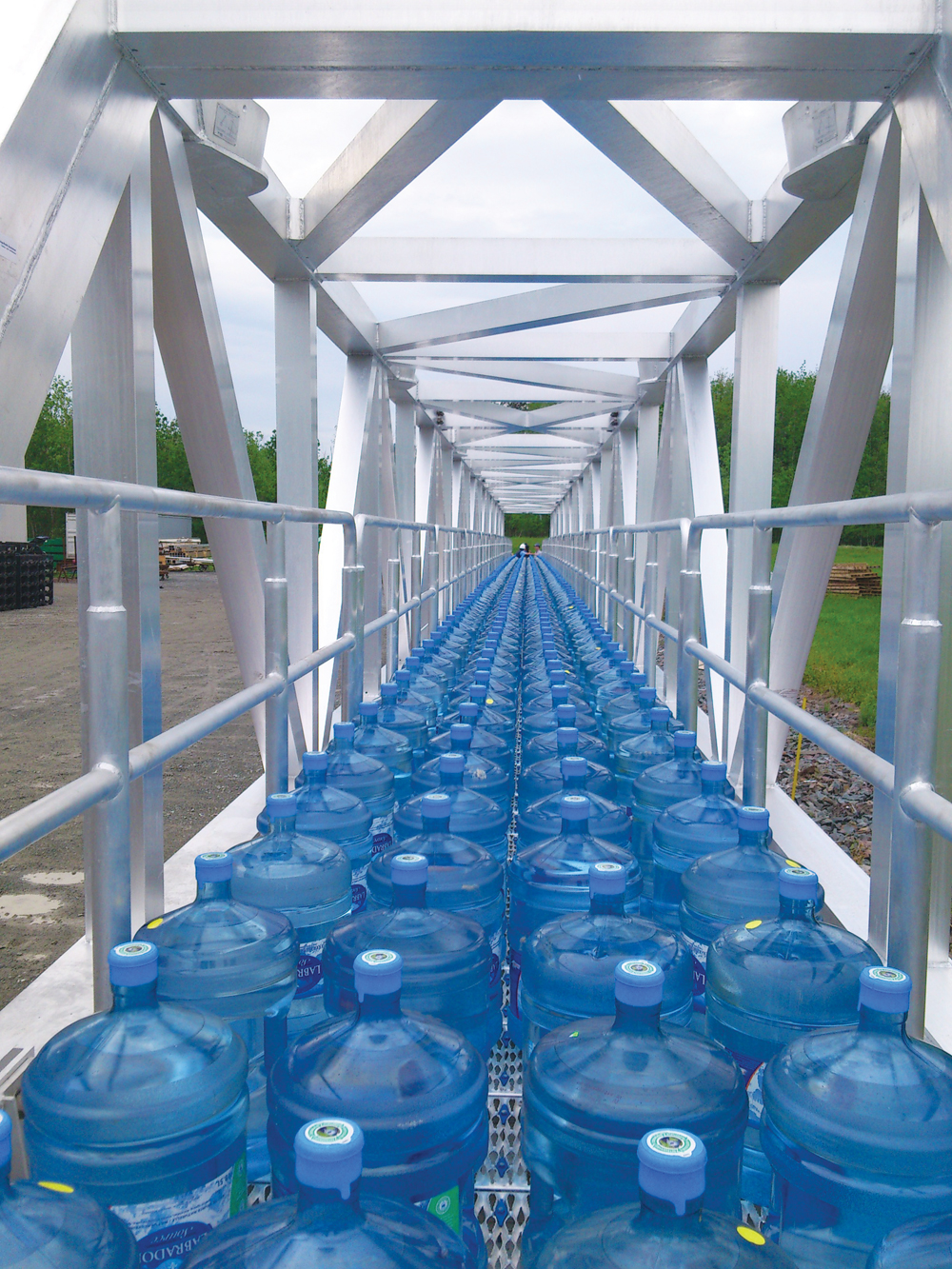Montreal-based MAADI Group recently designed a 151-foot-long, 6½-foot-wide pedestrian work bridge to connect platforms in the West Philippine Sea. Using high-strength aluminum for the bridge’s material, MAADI designed the bridge with lateral movement capability that could withstand deep-ocean movement and wind gusts up to 200 km/hr (124 mph).
MAADI’s President/CEO, Alexandre de la Chevrotière, says that water and wind movements can cause the platforms to shift by as much as one inch, so the bridge was engineered to account for movement up to one meter. A trolley system at one end of the bridge allows slight back-and-forth movements of the bridge between the platforms.
The span was built in four sections. Its abutments are unique, according to de la Chevrotière, in that their pin connections rotate on two axes. There’s also a pin connection at the top of the trolley, which allows the bridge to move in several different directions by as much as three degrees to account for ocean movements, he says.
The 13-ton bridge was built to accommodate up to 80 workers on deck. (The accompanying image shows 8.4 tons of water being used to test the span’s load capacity.) The bridge’s camber was designed to reduce the deflection caused by dead and live loads.
“Aluminum is the material of the future,” says de la Chevrotière. “It doesn’t rust and it’s maintenance free.”
Read about more innovations from BD+C's 2014 Great Solutions Report.
Related Stories
| Oct 17, 2011
Schneider Electric introduces UL924 emergency lighting control devices
The emergency lighting control devices require fewer maintenance costs and testing requirements than backup batteries because they comply with the UL924 standard, reducing installation time.
| Oct 14, 2011
AISC develops new interoperability strategy to move construction industry forward
AISC is working to bring that vision to reality by developing a three-step interoperability strategy to evaluate data exchanges and integrate structural steel information into buildingSMART's Industry Foundation Classes.
| Oct 14, 2011
University of New Mexico Science & Math Learning Center attains LEED for Schools Gold
Van H. Gilbert architects enhances sustainability credentials.
| Oct 14, 2011
BD+C Survey on Building Information Modeling: The Good, the Bad, and the Solutions
In a recent survey conducted by Building Design+Construction, more than 75% of respondents indicated they currently use BIM or plan to use it. Respondents were also asked to comment on their experiences with BIM, what they liked and disliked about BIM, and what BIM-related advice they would give to their peers.
| Oct 14, 2011
ACI partners with CRSI to launch new adhesive anchor certification program
Adhesive anchor installer certification required in new ACI 318-11.
| Oct 14, 2011
Midwest construction firms merge as Black and Dew
Merger is aimed at increasing market sector capabilities and building on communication and core contracting competencies.
| Oct 14, 2011
AIA Continuing Education: optimizing moisture protection and air barrier systems
Earn 1.0 AIA/CES learning units by studying this article and passing the online exam.
| Oct 12, 2011
BIM Clarification and Codification in a Louisiana Sports Museum
The Louisiana State Sports Hall of Fame celebrates the sporting past, but it took innovative 3D planning and coordination of the future to deliver its contemporary design.
| Oct 12, 2011
Vertical Transportation Systems Reach New Heights
Elevators and escalators have been re-engineered to help building owners reduce energy consumption and move people more efficiently.
| Oct 12, 2011
Building a Double Wall
An aged federal building gets wrapped in a new double wall glass skin.
















